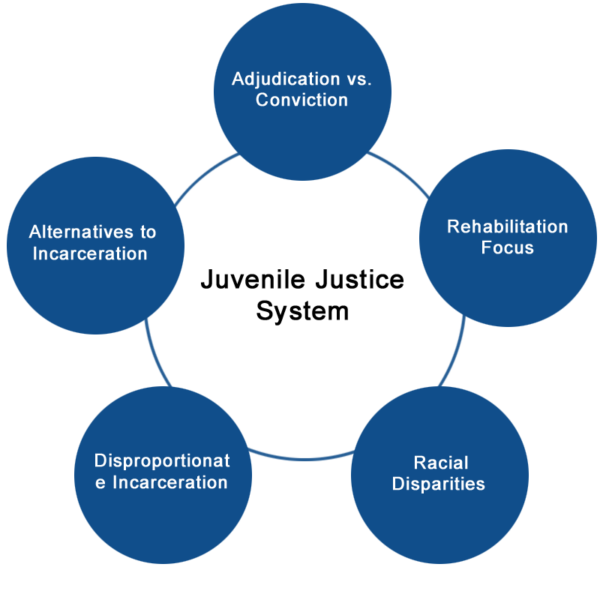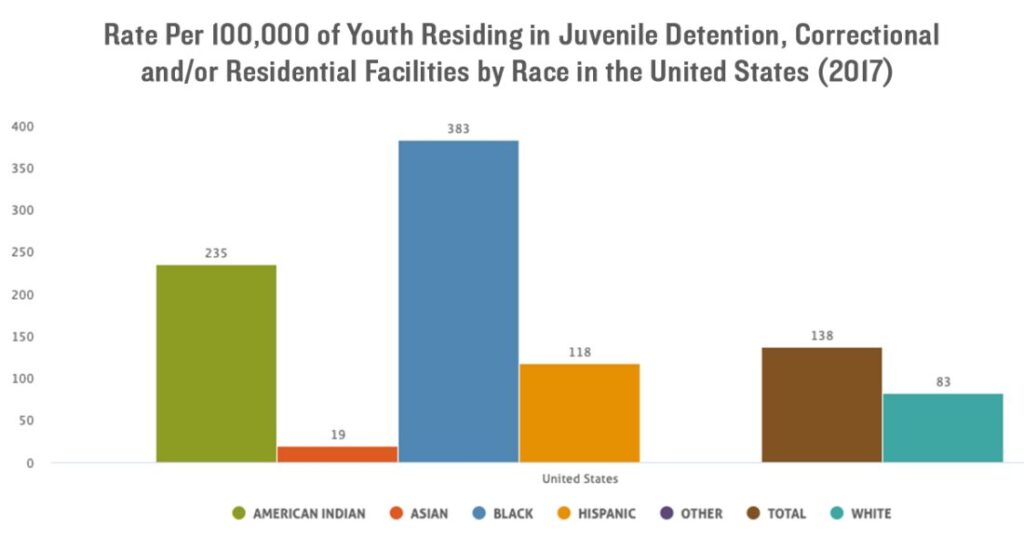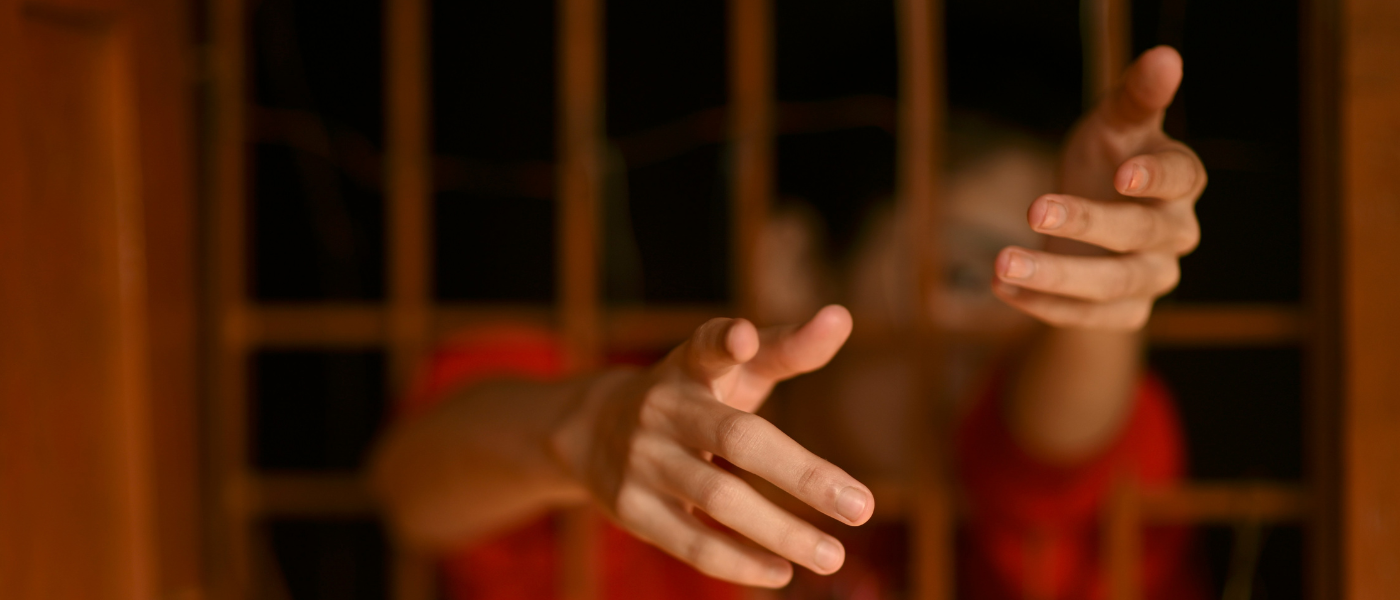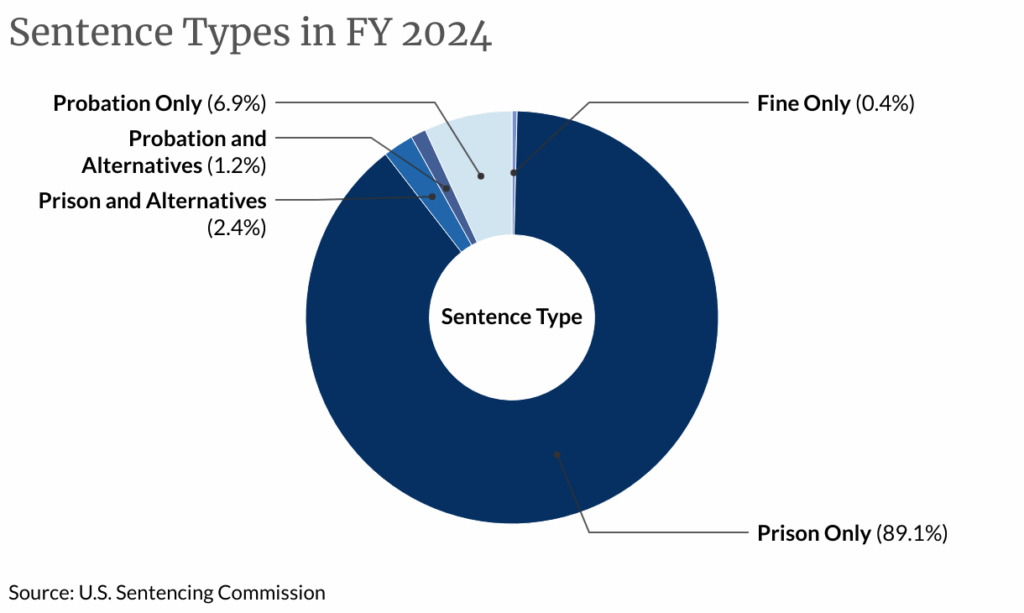Juvenile justice and adult justice systems are designed with very different goals. There are some significant gaps in approach, process, and result between the juvenile and adult justice systems. Nowadays, lawyers and judges must consider these issues, such as rising cases of teenage mental health concerns, more frequent patterns of recidivism, and the divide between children and adult offenders. You should know about the major difference between these systems and the ways professionals address them. As a criminal justice enthusiast or practitioner, exploring the key differences is worth the examination.
Increasing concerns about youth crime, racial disparities, and the momentum behind the national “Raise the Age” movement highlight the need for urgent decisions. Current youth justice reform 2024 initiatives require policymakers to support developmental and mental health justice approaches that focus on rehabilitation over harsh response approaches.
This is why criminal justice professionals are taking leadership roles in reforming the current criminal justice system. What they decide now will either support backward sanctioning methods or contribute to constructing less punitive and fairer systems. As a result of these choices, current systems are either preserved or replaced with new services designed for effective rehabilitation. The following discourse covers the existing dissimilarities between adult and juvenile justice systems and advancing initiatives by professionals to bring about meaningful changes.
1. Core Philosophies in a Changing Landscape
Juvenile System: Shift Toward Trauma-Informed Care
Research on Adverse Childhood Experiences (ACEs) indicates that the chances of a child reaching adulthood with adverse behavior are heavily influenced by violence, poverty, and abuse. California’s Senate Bill 823 advocates closing traditional youth prisons and reallocating funds to community-based mental health services and rehabilitation programs. The bill implies that in the past, the juvenile justice system was based on rehabilitation, but now it should move towards trauma-informed care.

Source: Fair Fight Initiatives
Social workers who are on the front lines of this transformation advocate for mental health assessments, individualized treatment plans, and restorative justice models so practitioners can focus on healing rather than punishing. Judges are also having evolved roles–they factor in developmental science by recognizing that adolescent brains are not fully developed, and the youths should not be judged by adult standards.
Adult System: Overcrowding and “Tough-On-Crime” Resurgence
In contrast, the adult system faces growing pressures from overcrowded prisons and a renewed emphasis on “tough-on-crime” policies. Cities like San Francisco, responding to concerns about rising retail thefts, have passed stricter laws targeting repeat offenders. This rhetoric mirrors the 1990s-era policies that contributed to mass incarceration.
Prosecutors are divided in this landscape. Some progressive District Attorneys, like former San Francisco DA Chesa Boudin, promoted alternatives to incarceration. However, public backlash led to Boudin’s recall, signaling a return toward traditional punitive approaches in many jurisdictions is what the majority wants. Prosecutors today have no choice but navigate these divides carefully, balancing public safety demands with broader reform goals.
Source: U.S. Sentencing Commission
Juvenile vs Adult Justice System – Core Differences
| Aspect | Juvenile Justice System | Adult Justice System |
| Core Philosophy | Rehabilitation and growth | Punishment and deterrence |
| Language Use | Shift to reduce stigma | Focus on second chances |
| Court Procedures | Emphasis on diversion and trauma care | Traditional adversarial system with bail and harsher sentencing |
| Sentencing Trends | Push to eliminate life without parole (NoKidsInPrison) | Debates over mandatory minimums (e.g., fentanyl prosecutions) |
| Reentry Focus | Expungement support and school reintegration | Ban-the-Box and employment assistance initiatives |
2. Legal Terminology & Equity Gaps
Juvenile System: How Language Shapes Things
The field of law regularly discusses juvenile justice. Previously, words such as “delinquent” have been used to stigmatize young people who have committed offenses. Those who support using the term ‘justice-involved youth’ argue that doing so could encourage people to help rehabilitate young offenders rather than send them to prison.
Contribution of Criminal Justice Professionals
Advocates for youth and defenders are urging the reform of juvenile statutes. They maintain that by removing the legislation defining stigma, the lives of young people can be improved. Changes in legal language are seen as necessary for making a more compassionate youth justice system as part of broader youth justice reform 2024.
Adult System: Promoting “Second-Chance” Laws
The language reform program differs for adults under the Clean Slate Act and similar second chance laws. An adult’s criminal record is closed or hidden after they have gone without committing crime and can then focus on bettering their life.
The Job of Criminal Justice Employees
They are key figures in supporting the establishment of these reforms. They seek to introduce second-chance laws to help people previously convicted of crimes overcome difficulties and achieve employment, education, and housing. However, the reach of these reforms is often limited by racial disparities and systemic inequities, echoing the broader issues seen with racial disparities in juvenile justice.
3. Court Procedures & Systemic Bias
Juvenile System: Racial Disparities in Detention
The operations of the juvenile justice system maintain persistent racial disparities through successive stages of its procedures. Young Black people encounter detention at a rate five times higher than White youths with the same demographic who are involved in offenses. Various law enforcement agencies, courts, and prosecutorial departments implement systemic practices that contribute to racial disparities and inequalities throughout the legal process. Handling juvenile populations with unequal proportions dissolves the purpose of healing and intensifies social and financial instability.

Source: AECF
Criminal Justice Response: Diversion Programs
Diversion programs exist because jurisdictions across the nation want better options than the standard detention solutions. Los Angeles County programs, through restorative justice initiatives, establish programs that enable community dialogues between victims and perpetrators to solve conflicts instead of detention. These initiatives offer accountability because they are a healing approach to reconciliation and serve young people of color who are subject to too many traditional sentences. This funding for diverting criminal justice professionals maintains equal treatment of minorities in juvenile justice systems, without denying young people the use of any type of educational or helpful services.
Adult System: Bail Reform and Bias Concerns
Racial bias problems are the highest at the adult system level in the pretrial detention and bail processes. Instead of displaying dangerousness to the community, the principal reason adults remain in jail is that they cannot afford to pay their bail. Now, laws on bail are being modified to assess risks for flight or to pose a safety threat in the community. The assessment instruments reproduce the biases in the process and thereby expand system inequities.
Role of Criminal Justice Professionals
Different opinions are held by the presiding judicial officers, prosecution leadership teams, and defense teams. Each on how to protect society and ensure fair proceedings and the speed of pre-arrest procedures. Abolishing bail programs, however, is something several experts support, and other experts say they want to see bias in the way assessment algorithms are applied. Adult justice professionals draw on their understanding of racial disparities within the juvenile justice system to guide and implement modern reform initiatives.
Systems.
4. Rights of the Accused & Tech Challenges
Juvenile System: Social Media as Evidence
Social media content plays a very important role in the judicial system to prosecute juvenile offenders in court proceedings. The United States police force monitors Snapchat, Instagram, and TikTok usage to identify gang participation as well as potential criminal activities. Moreover, it is said that he trend raises profound privacy concerns. Together with incorrect analysis potential, as it creates a greater chance of racial discrimination in policing for young adults. The Sentencing Project reports that in 2021, Black youth were 4.7 times as likely to be placed in juvenile facilities as their white peers.
Role of Defenders:
Defense lawyers and juvenile rights advocates stand against digital surveillance because they see it as unconstitutional. It create incorrect criminal histories for regular adolescent behaviors. According to defense attorneys’s teenagers social media content lacks criminal meaning, but digital evidence in prosecutions leads to stereotyping based on race. Preventing the use of unacceptable digital surveillance on young people has become the focus within youth justice reform initiatives for 2024.
Adult System: Advances and Backlogs in Forensic Technology
The advancement of DNA testing as forensic technology enables the release of wrongfully imprisoned people from prison cells. Multiple police departments now face major forensic backlog problems that slow down the processes of delivering justice between innocent defendants and genuine victims.
Role of Lab Professionals
Laboratory professionals ensure the success of both timely and accurate evidence analysis. The system experiences delays due to a lack of resources, along with understaffed units and administrative hurdles. The advancement of technology makes it necessary to prioritize ongoing investments in forensic facilities, as these upgrades directly influence the efficiency and fairness of adult criminal justice procedures.
5. Sentencing & Reform Movements
Juvenile System: Ending Life Sentences for Youth
Currently, advocates are working to eliminate LIFE-WITHOUT-PAROLE sentences for adolescents in the juvenile justice system. NoKidsInPrison” shows how young inmates suffer when destined to spend their remaining days in prison. Many landmark Supreme Court decisions and rules set by various states made it clear that putting minors through a mandatory life sentence for their crimes is a violation of their constitutional rights.
Role of Advocates: Ensuring Compliance
The legal triumphs of Miller v. the win in Alabama should lead to continuous active compliance activities. Alabama remains an ongoing struggle. Public defenders, alongside youth organizations, continue their work to support judicial reviews to reevaluate the improper sentencing of young offenders. Their responsibilities exist at two fronts: protecting constitutional rights and leading reform efforts for youth justice in the coming year of 2024.
Adult System: The Fentanyl Crisis and Sentencing Debates
The growing number of drug-related cases in the judiciary has sparked heated disagreements among decision-makers about how to administer justice. Some people advocate for severe punishment of drug offenders, while others believe that this strategy reflects failed tactics of previous drug wars. Enforcing strict penalties is predicted to perpetuate disadvantages for people of color and only result in small improvements for public health.
Role of Criminal Justice Professionals
The various issues in drug policy creation need to be handled by both probation officers and public defenders. The professionals support diversion programs with harm reduction approaches as better alternatives to conventional, punitive sentencing approaches. Substance abuse is approached as a public health issue in their research framework to develop sustainable, long-term solutions for the critical national problem.
6. Transfer to Adult Court: A Hot-Button Issue
Juvenile System: High Numbers of Transfers
The Justice Policy Institute reports that yearly adult criminal courts handle approximately 53,000 youth cases. Experts continue to support the practice of moving juvenile offenders to adult court proceedings despite evidence indicating that adolescents possess underdeveloped brains. Young people facing adult criminal proceedings get harsher punishments, together with limited access to education, while they remain at higher risk for mistreatment in adult prison systems.
Trend: States Reversing Transfers
Movement activists around the nation continue to accumulate support. The “Raise the Age” law currently operates in Michigan and various other states to abolish established procedures for automatic court transfers between adult and juvenile systems. These progressive legal changes understand that juveniles exhibit major differences from adults through their capacity to choose and their impulsive behavior and developmental potential factors which aids the wider reform objectives for youth justice during 2024.
Role of Criminal Justice Professionals
A judge determines the seriousness of a crime through transfer decision analysis based on developmental science findings. Research on prefrontal cortex development now serves as a professional standard when establishing that individuals under age 25 lack sufficient long-term judgment capabilities. Scientific proof requires judicial institutions to select rehabilitation over correctional measures for youthful perpetrators since it aligns academic findings from cognitive research with framework treatments.
7. Long-Term Impacts & Reentry
Juvenile System: School-to-Prison Pipeline and Reform Efforts
The consequences of the juvenile justice system go well beyond the courtroom, and they continue to have an impact on an individual’s life over time. One major concern is the “school-to-prison pipeline,” driven by zero-tolerance discipline policies and the presence of school resource officers, which disproportionately funnel students of color into the justice system. Many youths are brought into this system because of minor infractions of rules, which then turn into involvement in more serious infractions.
Trend: Police-Free Schools Movement
Education system reform initiatives have started rolling out through various current implementations. The Oakland government directed previous school security employees to fund restorative justice programs and counseling while schools worked toward dual goals of educating students without steering them toward jail.
Role of Criminal Justice Professionals
A successful reentry program for juveniles requires necessary support from both counselors and legal professionals and social workers. The elimination of obstacles to education through record expungement programs functions as a critical resource that also allows people to overcome hurdles to job and housing access. The central mission of professionals involves tracking down lawful possibilities that let young people rebuild their lives beyond recurrent punishment.
Adult System: Barriers to Successful Reentry
With the digital support systems, reentry specialists can work with probation staff and nonprofit organizations to assist former prisoners. The clients have access to employment and housing training programmes as well as mental health services under the guidance of the specialists. Professionals who provide complete assistance to offenders reduce the chances of the imminent repetition of crime as they help accomplish the aims of safety through rehabilitation programs rather than conventional punishment systems.
Trend: “Ban the Box” Laws and Reentry Support
“Ban the Box”“Ban the Box” legislative tactics that ban businesses from asking those hired early if they have a criminal history are the key equality measure of the convicted people. These laws are unfair against the prejudiced attitudes but also act as an entry point for people to return to society in a successful manner.
Role of Criminal Justice Professionals
Web-based programs combine with reentry specialists to team with probation officers and nonprofit staff to deliver rehabilitation services. In addition to mental health services, specialists provide clients with a variety of housing choices and employment training. The rehabilitation-based efforts, as opposed to punitive ones, lead to better public security owing to the detailed work practices of these professionals and, in turn, decrease re-offending rates among offenders.
Conclusion
The differences between juvenile and adult justice systems remain profound, rooted in fundamentally distinct philosophies: one emphasizing rehabilitation, the other prioritizing punishment. In today’s rapidly evolving landscape, the lines are starting to move and in favor of the youths. Youth justice reform 2024 initiatives that are transforming how young people are sentenced as offenders are based on brain development and systemic bias research. Longstanding inequality is remedied at the same time via adult system reforms of second chance laws and bail reform debates, but progress is slow.
These transformations highlight the vital roles of judges, social workers, attorneys, forensic scientists, and other criminal justice professionals, recognizing them as key agents in delivering services and shaping a more equitable justice system. The fact that they are expanding their roles means that change for the better is not only going to happen through legislation but also through the everyday push and pull effects of the system itself.
Additionally, these professionals are the bodies in which a more just and equitable system lies through supporting reentry efforts, reforming bail practices, fighting against digital surveillance, advocating for trauma-informed care, and so on. However, despite this, moral as well as prudential imperatives officially deal with racial disparities in the juvenile justice system and guarantee fairness at all stages of the process.



